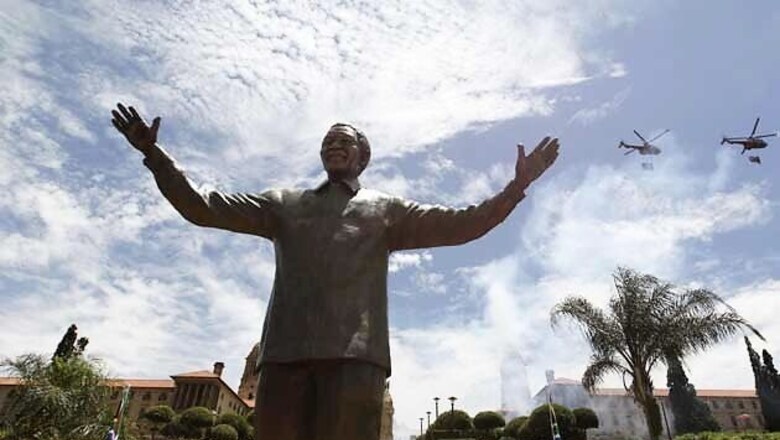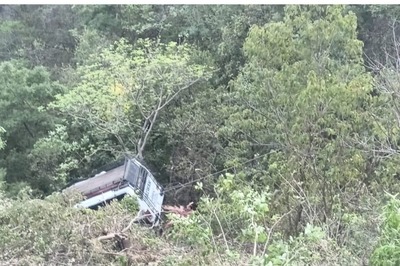
views
Pretoria: A nine-meter (30-foot) bronze statue of Nelson Mandela with his arms outstretched to symbolize unity and reconciliation was unveiled in South Africa on Monday, a day after the nation buried the former president and anti-apartheid hero.
The 4.5 metric ton statue is the largest of Mandela created in the world and was inaugurated on the lawn of South Africa's hilltop Union Buildings, the seat of the central government, overlooking the capital Pretoria.
Mandela died aged 95 on December 5 in Johannesburg and was buried on Sunday in his home village of Qunu in Eastern Cape province following 10 days of emotion-charged mourning that focused the attention of the world on South Africa.
"We laid Tata to rest in Qunu only yesterday. Today, he rises majestically at the seat of government, as a symbol of peace, reconciliation, unity and progress," South African President Jacob Zuma said at the unveiling.
"Tata" is the Xhosa word for father, and Mandela is revered as the father of the new South Africa born from the end of apartheid in 1994 when he became its first black president.
The inauguration coincided with December 16 Reconciliation Day, a public holiday commemorating the ideal of racial and political reconciliation that Mandela preached after his release in 1990 from 27 years in apartheid prisons.
FROM STRUGGLE TO RECONCILIATION
Under apartheid rule, Reconciliation Day had remembered the 1838 Battle of Blood River, in which some 500 Afrikaner pioneers defeated more than 10,000 Zulu warriors.
But it was renamed in 1994 in a bid to heal the wounds of three centuries of white dominance.
There are half a dozen Mandela statues in South Africa and around the world, and the new one is expected to draw more visitors to the 100-year-old Union Buildings, which have been declared a national heritage site.
"There are quite a few statues of Madiba with his fist in the air. That was the symbol of the struggle era," Dali Tambo, chief executive of the National Heritage Project Company, told public broadcaster SABC.
"We wanted a pose that said unity, reconciliation."
"Madiba" is the Xhosa clan name by which Mandela was affectionately known.
The brown sandstone Union Buildings, built by British colonial architect Herbert Baker, were the site of Mandela's swearing in as president nearly two decades ago.
It was also the location where his body lay in state for three days last week as over 100,000 people paid their respects in person, before his state funeral in Eastern Cape on Sunday.




















Comments
0 comment